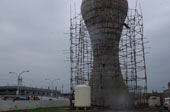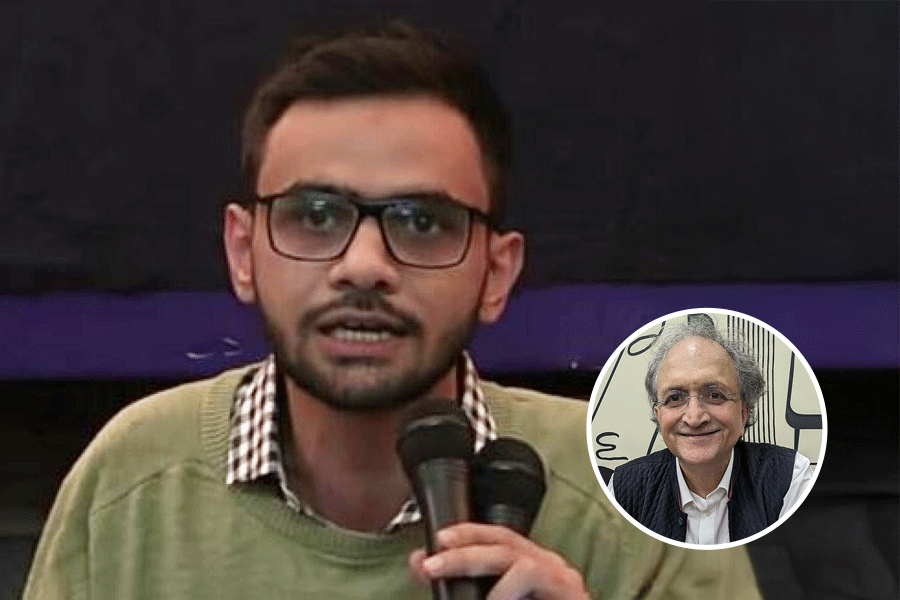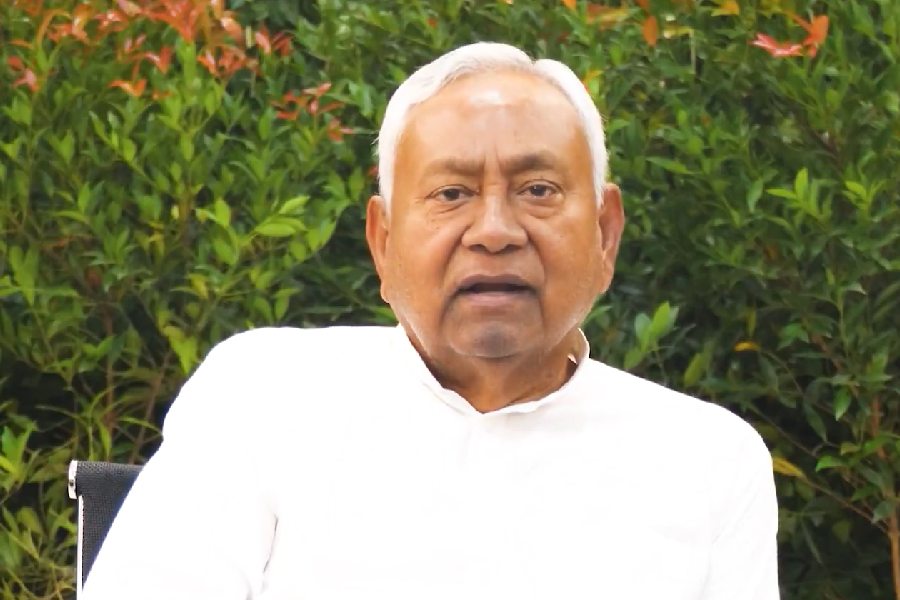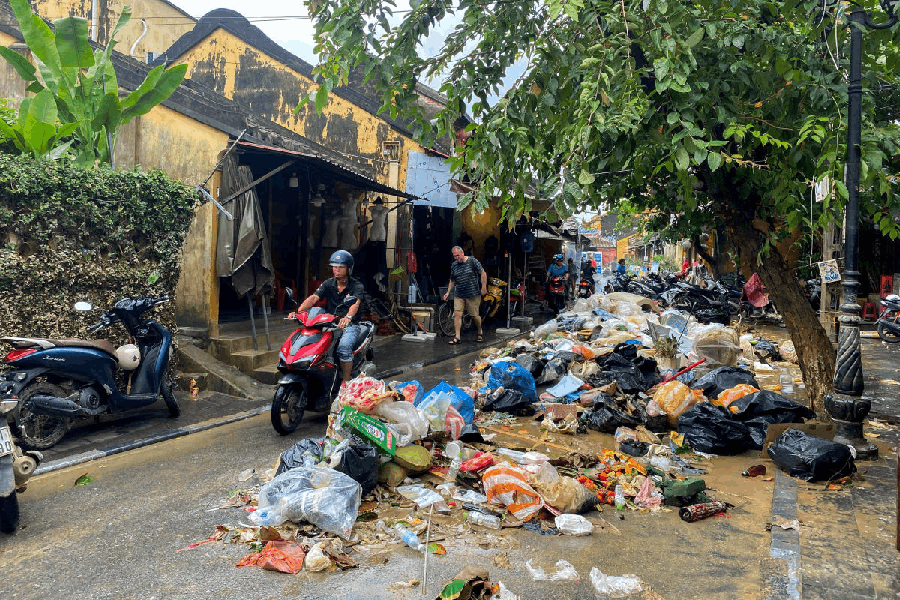 |
The perforated pyramid-shaped steel canopies over the three gates to the Calcutta leather complex look futuristic. Inside the proposed sprawling leather industry hub at Bantala, some 25 km from downtown Calcutta, serenity reigns supreme, far from the heat generated over the project in Writer’s Building, the seat of power in Bengal.
Chief minister Buddhadeb Bhattacharjee, who tried in vain to checkmate Jagmohan Dalmiya in the recent Cricket Association of Bengal election, has made no secret of his displeasure over the “inordinate” delay in the project being set up by M.L. Dalmiya & Company Limited (MLD), headed by the former BCCI boss. In fact, Bhattacharjee’s calls for Dalmiya to quit the CAB before the July 30 election (which Dalmiya turned down and went on to win the election) were widely attributed to his annoyance over the way the leather complex was being set up.
Inquiries by The Telegraph, however, reveal that the project has been beset with a number of problems since its inception, contributing to the delay. The project has also been hit by a lack of demand for space for tanneries and other leather manufacturing units.
The Calcutta leather complex, known by its abbreviation CLC in the state’s bureaucracy, is chiefly the result of a Supreme Court ruling in the mid-1990s. In response to a public interest litigation, the apex court, in a series of judgements ending in December 1996, ordered that polluting tanneries at Tangra, Topsia and Tiljala be moved outside of the city.
The project was conceived by the Jyoti Basu government essentially to relocate some 538 polluting tanneries and was entrusted to MLD on a build, operate and transfer (“BOT”) basis. According to Mausumi Guha Roy, the officer on special duty to the project, the state government signed the agreement with MLD in June 1997 following a memorandum of understanding (MoU) with the company in May 1995. (Dalmiya says he was awarded the contract in a “global” tender in which a number of Indian companies had participated in partnership with foreign companies and done presentations but no bids had been called.)
Under the agreement, MLD was to build “on-site” infrastructure such as the development of the site, building roads, distributing power and supplying drinking and processed water to the tanneries and other leather units. The state government, on the other hand, was to build “off-site” infrastructure. This included the widening of the Calcutta-Basanti road that slices through Bantala, de-siltation and realignment of two canals, a power sub station, a fire station and a police station for the complex.
According to the agreement, the 1,100-acre leather complex, estimated to cost nearly Rs 300 crore, was to be completed in four years after the land required was handed over to MLD. Once the project was complete, the company was to “operate and maintain” it for 30 years and then hand it back to the government.
The project first hit a roadblock over a common effluent treatment plant (CETP), which was to be built under the Supreme Court order to reduce water pollution caused by the tanneries. MLD was to build it with the state and Union governments providing funds on a “50:50” basis.
While the Centre provided the funds on time, the state government asked MLD to do it “out of its pocket” and later recover the cost in installments from the relocating tanneries, as suggested by the Supreme Court.
The government, however, changed its mind and decided to build it “on its own” after MLD asked it to provide a bank guarantee in case the tanneries defaulted. “Where was the guarantee that the tanneries would pay us after the plant was built? Our bank needed a guarantee in this regard from the state government,” Dalmiya, chairman of the company, says.
Officials acknowledge the delay that the wrangling over the plant has caused the project. It was only in 2002 that the state government decided to build four of the six modules required for the effluent plant following a design suggested by the United Nations Industrial Development Organisation.
Land acquisition was delayed as well. MLD was handed over the plots in bits and pieces and by the time it got all of the 1,100 acres required for the project it was 2003. The last stumbling block was Bedarhite village (some 36 acres) that was located in the middle of the proposed complex. While some officials blamed Dalmiya for holding off on construction until he got the entire land, the MLD chairman says he could not finish the project as he did not get contiguous plots. “The project definitely got delayed because the land required for it came to us very late,” Dalmiya says.
The project was dogged by other trouble too. Guha Roy says a number of review petitions filed by the tannery owners with the Supreme Court drew out the legal battle as many of them were reluctant to move to the new location far from the city.
Of the 538 tanneries in the city, some 523 had applied and paid for land at the Bantala complex by 2003. But then, 93 of them were left in the lurch as the apex court, on the basis of a Central Leather Research Institute report, stipulated that each tannery should have at least 400 square metres of space. “These 93 companies bought plots smaller than the stipulated size,” Guha Roy says.
The original area earmarked for tanneries in the complex, too, shrank from 332 acres to 202 acres after some state agencies, including the state waterways investigation directorate (SWID), raised objections to the huge amount of water the tanneries would use. As a result, the state government asked MLD, in a “supplementary” agreement signed last January, to use the remaining 130 acres to build an information technology park.
Dalmiya says his company has so far suffered losses providing some 150 acres of land it developed at less than half the price to the relocating tanneries. “We spent nearly Rs 1,450 to develop a square metre of land but we had to give it to the relocators at Rs 600 per square metre. We also paid the government Rs 16 crore for land and another Rs 1 crore in stamp duty at the very beginning and have got no return on our investment,” he says.
Subhas Mukherjee, the engineering consultant to the project, says there have been few takers for space in the project. “All the equipment installed there is rotting,” he says.
The tanneries that have moved there are not happy either. Ahsan Jamil, production manager of N.J. Leather Enterprise in zone one of the complex, says the cost of production has gone up as “here we have to pay even for water”. “We are unable to compete because we have to pay not just for the maintenance of our tannery but for the entire complex,” he says. “The government has killed the leather industry by creating this complex,” he declares.











